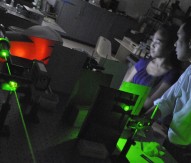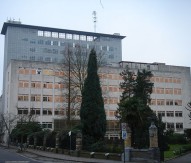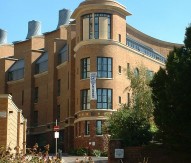
Spintronics to assist future electronics
Scientists at the University of Nottingham have developed a new material which, it is hoped, will provide more processing power and a lower energy cost in electronic devices.
The research, which is part-funded by the European Research Council in collaboration with the Institute of Physics ASCR (Prague), has helped to develop a new antiferromagnetic spintronic (spin transport electronics) material – tetragonal CuMnAs. Where conventional electronics rely only on the charge property of electrons, spintronics makes use of another fundamental quantity of electrons termed ‘spin’. In antiferromagnets, electron spins on adjacent atoms tend to cancel each other out. It is therefore surprising that they can perform an active role in spintronic devices. However, recent calculations and experiments have indicated a range of new physical phenomena associated with antiferromagnets, potential memory and sensing applications. This new material, with high crystal quality and compatibility with existing semiconductors, is a promising candidate material for the new field of antiferromagnetic spintronics.
Most modern electronic devices are based on conventional semiconductor logic technology, which relies on the presence or absence of electrons carrying charge to operate. On the other hand, many forms of memory, conventional hard disks for example, use magnetism to store data.
Dr Peter Wadley of the University of Nottingham said: “For a long time it has been the desire of physicists and industry to combine these two properties – the logic functionality of semiconductors with the storage capability of magnets – into a single material. In spintronics, you rely not only on the presence or absence of charge, but also on a fundamental quantum property of electrons called their ‘spin’.
“Looking at antiferromagnets as an active component of spintronic devices opens up a whole new array of material systems to explore, many of which have high critical temperatures. With CuMnAs we now have a very nice system for exploring the new field of antiferromagnetic spintronics,” Dr Wadley added.
Spintronics offers the possibility of lower power consumption which enables higher density computation and storage. Antiferromagnets have no associated magnetic field, antiferromagnetic spintronics means individual devices do not interact with one another and, in theory, they can therefore be packed together even more densely.
The research is published in the journal Nature Communications.






